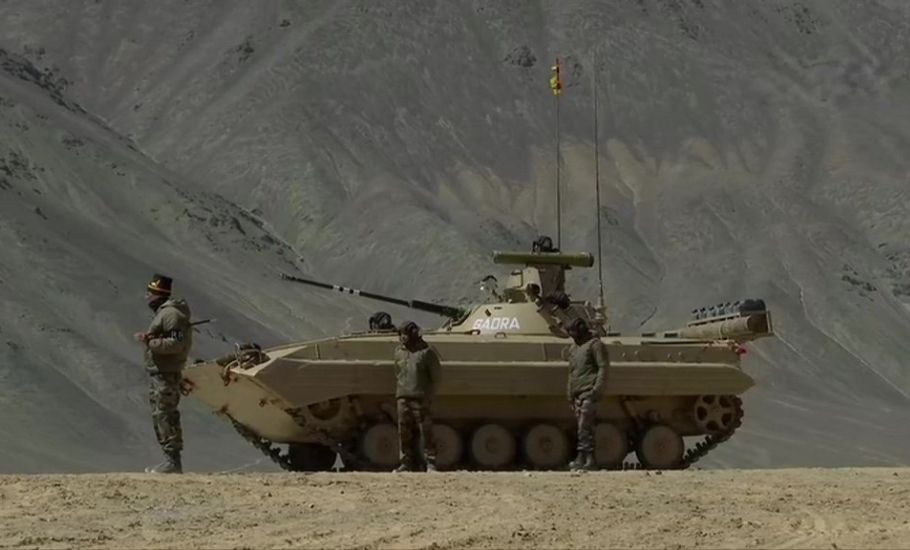
Jawans take Tibetology lessons to match China’s ethnic Tibetan outreach
The Army has identified seven institutes where its personnel will undergo specialised courses to understand the Tibetan history, culture, language, politics and topography; the decision comes after China’s PLA introduced new militia units for socio-cultural outreach in its Tibet autonomous region

The Indian Army has started a course on Tibetology for its officers and soldiers to better understand Tibetan history, culture, language, politics and topography in what is interpreted as a counter to China’s recent outreach to ethnic Tibetans.
A first batch of 42 soldiers of the Army’s Eastern Command completed the course at the Central Institute of Himalayan and Cultural Studies (CIHCS) in Arunachal Pradesh’s West Kameng district earlier this week. The 42-day course was attended by officers drawn from various army units deployed in Arunachal Pradesh and Assam.
Also watch: “Free Tibet Dream is Alive”
“An understanding of Tibetan language, culture, history and political situation will help the young officers connect with people in bordering areas when they will get deployed along the Line of Actual Control (LAC) with China as Tibetan community inhabits either side of the border,” a senior army officer of the Tezpur-based 4 Corps in Assam told The Federal.
The officer said the Army always maintains a very cordial relationship with the locals and the Tibetans living in India and this course would further cement the bond.
A Tibetan counter to China’s Mimang Cheton
India felt the need for such courses last year soon after intelligence intercepts revealed that China’s People’s Liberation Army (PLA) was raising new militia units named Mimang Cheton for socio-cultural outreach in its Tibet autonomous region.
For this purpose, the Shimla-based Army Training Command (ARTRAC) identified seven institutes in India for army personnel to undergo specialised courses in Tibetology as part of a slew of measures India has recently initiated to scale up the cultural battle with China.
Apart from the CIHCS at Dahung in Arunachal Pradesh, the other centres are Delhi University’s department of Buddhist Studies, Central Institute for Higher Tibetan Studies in Uttar Pradesh, Nava Nalanda Mahavihara in Bihar, Visva Bharati in West Bengal, Dalai Lama Institute for Higher Education in Karnataka and Namgyal Institute of Tibetology in Sikkim.
Incidentally, the Mimang Cheton has been modeled after India’s elite Special Frontier Force (SFF) raised in 1962 and mostly comprising Tibetan refugees in India.
Touching base with monastic values
One of the interesting aspects of China’s Mimang Cheton units comprising local Tibetan youths is that after completion of training the recruits are blessed by Buddhist monks, a rare religious overture in Communist China.
The militia, specialised in high-altitude warfare, is deployed in upper Himalayan ranges in the eastern and western sectors of the India-China border.
Significantly, the Tibetology curriculum developed for the Indian army personnel also includes visits to the Buddhist monasteries and participation in important festivals of Tibetan Buddhism, according to army sources.
The batch that completed the course at CIHCS visited Buddhist monasteries of Chillipam, Dirang and Bomdila located in Arunachal Pradesh.
They also participated in the most revered festival of Tibetan Buddhism, Saka Dawa at Chiilipam Monastery in the small picturesque town of Rupa.
Another highlight of the course was guest lectures by Padma Shri Guru Tulku Rinpoche, Abbot of Bomdila Monastery and Claude Arpi, famous author and a domain specialist in Tibetan geopolitics.
As part of the course the officers researched on subjects such as Tibetan Buddhism, people of Tibet, Sinicization of Tibet and the political system in Tibet before and after 1950, the year the process of annexation of Tibet by China began, defense sources said.
Thrust on Mandarin proficiency
The Indian Army of late is also giving added thrust in imparting training in Mandarin, one of the key languages spoken in China, to its personnel.
The Army’s language schools in Eastern, Northern and Central commands have introduced Mandarin language courses for its personnel.
Last month it issued a notification inviting applications for Mandarin experts to be inducted into the Territorial Army.
A couple of months ago, China’s military TV channel CCTV-7 aired visuals of PLA soldiers deployed near the Indian border in eastern Ladakh learning Hindi.
The CCTV-7 titled its story, “Mastered Hindi in 4 months.”
The cultural push comes at a time when India and China are engaged in military talks for restoration of status quo along the LAC in Western sector as existed before the May 2020 Galwan Valley faceoff in which at least 20 Indian soldiers were killed.
Since June 6, 2020 16 rounds of talks were held between the two sides, the latest being on July 17 this year, without much headway.

